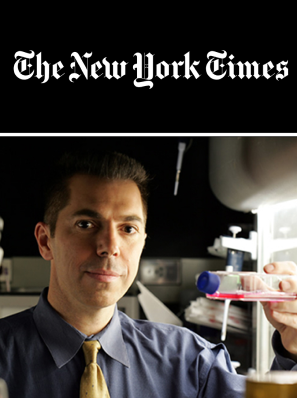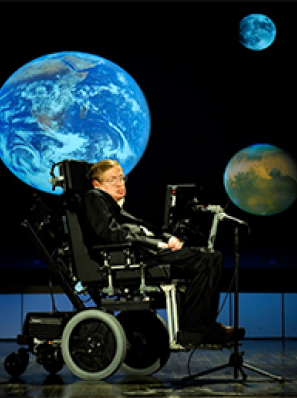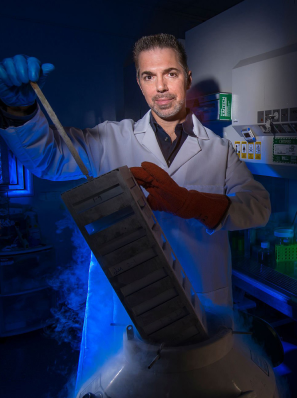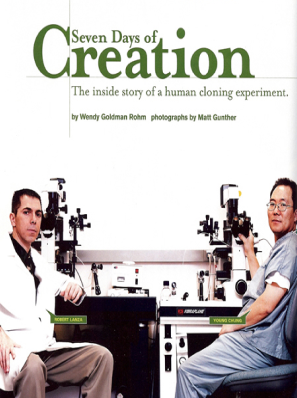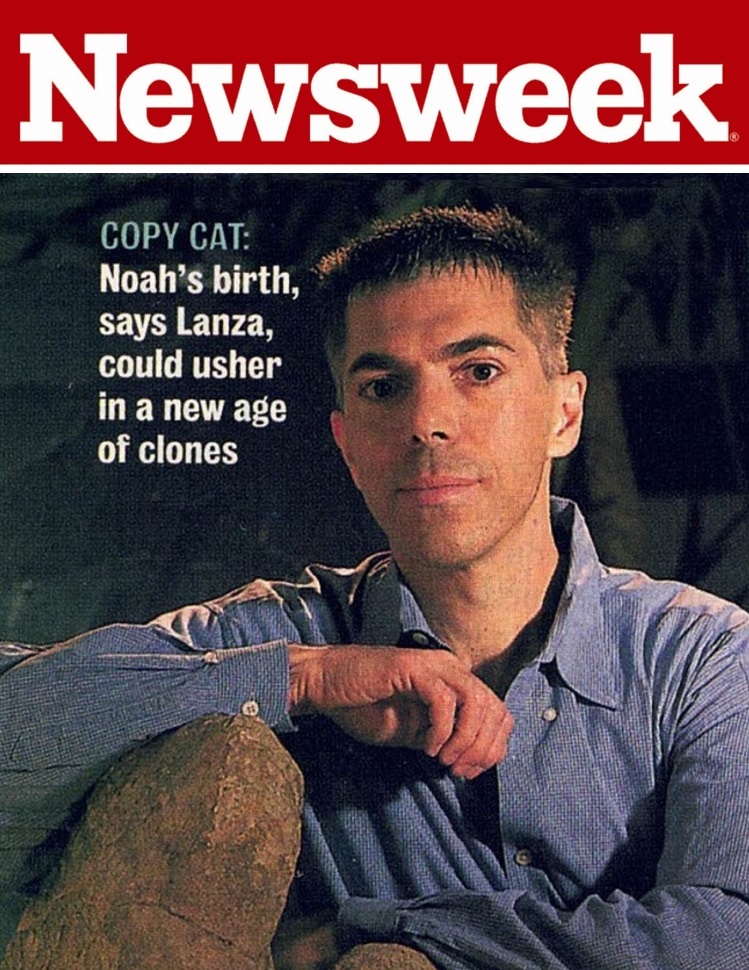The great promise of stem cells is finally being put to the test. “We are finally ready to break ground on this field with the first trials,” says Dr. Robert Lanza, “It’s taken a decade of extensive research to get to this point.”
The Tiniest Transplant
The great promise of stem cells is finally being put to the test
(TIME Cover Jun. 27, 2011)
Dr. Steven Schwartz had been waiting 14 years to make the phone call. As an eye doctor at the University of California, Los Angeles, Schwartz sees his share of patients with serious diseases that slowly rob them of their sight. Yet when a 12-year-old girl went to him complaining of vision problems, he had the difficult job of diagnosing her with Stargardt’s, one of the more common forms of macular degeneration, in which the photoreceptor cells start to deteriorate. He had to tell her that the world she knew would gradually, pixel by pixel, fade into darkness and that there was nothing he could do to treat her impending blindness. He suggested she try visual aids and vitamins to keep any remaining cells functioning, but that was all he could offer. She and her family were interested in participating in research trials, however, so he promised that he would call if any new opportunities arose.
Nearly a decade and a half later, Schwartz kept that promise and phoned the patient he couldn’t forget with some exciting news. He was getting ready to test the first embryonic-stem-cell therapy for Stargardt’s and dry macular degeneration. Would she, he wondered, be interested in learning more? (See Stem Cells in “10 Ideas that Will Change the World.”)
Now 26 and legally blind, the young woman, who can’t be identified until after her treatment because of informed-consent rules, immediately said yes. She is being evaluated as a potential pioneer to receive the first retinal pigment epithelium (RPE) cells generated from embryonic stem cells. If accepted, she will join a handful of other patients with macular degeneration who will have thousands of cells injected into their eyes to replace their destroyed RPE cells in the retina and, hopefully, rescue any remaining photoreceptor cells. They will help scientists answer a critical question: After all the controversy over embryonic stem cells, are therapies derived from them safe and ultimately effective?
Two patients with spinal-cord injuries have already received injections of another embryonic-stem-cell-based treatment — millions of specific cells that help neurons communicate with one another — in an effort to repair the shredded network of nerves that crisscross the spinal cord and extend out to the arms, legs, fingers and toes. While still a select group, together these patients represent the first wave of what doctors hope will be a new era in cell-based medicine. Instead of treating disease symptoms with drugs or surgery — regular insulin injections for diabetics, for instance, or medications to help break up the plaques that strangle nerve cells in the brains of Alzheimer’s patients — they’re hoping to replace damaged and no-longer-functioning cells with new, healthier versions that could eventually lead to a cure for countless chronic diseases, from macular degeneration to diabetes, heart disease and spinal-cord injury. And the key to generating these new cells will be stem cells. (See “The Stem-Cell Ruling: Scientists Alarmed at ‘Step Backward’”)
“We are finally ready to break ground on this field with the first trials,” says Dr. Robert Lanza, chief scientific officer at Advanced Cell Technology, the company that makes the RPE cells. “It’s taken a decade of extensive research to get to this point.”
In those 10 years, stem-cell scientists have had to address some tough questions about how realistic it would be to extract stem cells from a human embryo, coax those cells to develop into nerve and eye cells and then transplant them into patients. The burden on these vanguard trials is huge, and the questions they inspire are legion — and disturbing. Will the transplanted cells “take,” escaping destruction by their new hosts’ immune systems? The cells are, after all, made from embryos that were completely unrelated to the recipients. Will the fact that the cells were developed from embryonic stem cells lead them to form tumors? Embryonic stem cells are known for their ability to grow indefinitely. Left alone, such cells tend to form grotesque balls of different tissue types — bone, skin, tooth, hair, muscle — known as teratomas. And if the transplanted cells do survive and don’t form tumors or teratomas, will they function properly? Will that function be enough to restore some feeling, in the case of the spinal-cord-injury patients, or some vision in the eye patients?
See TIME’s health special report: “Cancer in the Crosshairs.”
Stem-cell scientists certainly aren’t expecting to answer all these questions with this first round of trials. In fact, the initial patients are part of important safety tests to determine if stem-cell-based tissues are safe and robust enough to live and grow in human patients. As in any situation involving a completely novel treatment with no precedent in medical history, the scientists are hoping for the best but bracing for the worst.
They have good reason to be cautious. Just eight months after it won approval from the Food and Drug Administration, the spinal-cord trial, led by Geron, was suspended for nearly a year after ongoing animal studies found that the transplanted nerve cells started to form odd clusters in the spines of the animals. Scientists eventually determined that the so-called rosettes weren’t tumors and allowed the trial to continue, but the experience highlights the vigor and unpredictability of the cells. Learning from that incident, Lanza decided to take no chances and developed a test that would detect a single stray stem cell, with the potential of developing into a teratoma, that might have escaped into a preparation of over a million RPE cells. “Our cells are 99% to 100% pure,” he says. (See how new research is helping Alzheimer’s patients.)
The retinal cells may have an advantage when it comes to immune rejection. The space beneath the retina where the cells are injected is generally free of the body’s patrolling immune sentries. But in the patients in the trial, the RPE cells have been so damaged by disease that it’s not clear whether they continue to maintain their immune-protected cocoon. So just to be safe, the volunteers will be taking drugs to suppress their immune system, in much the same way that patients receiving organ transplants from unrelated donors do.
Looking ahead, such immune protection may not be necessary. Researchers can now make embryo-like stem cells from a patient’s own skin cells, which means that the concern about immune mismatch between donor and recipient cells may become moot. There’s another benefit to these embryo-free stem cells, known as induced pluripotent stem cells, or iPS cells. Because they can be made from patients suffering from diseases like diabetes or Lou Gehrig’s, scientists can watch how these cells develop and better understand how a motor neuron in a patient with such a disease starts to go awry. (See a graphic on how stem cell research works.)
So while a lot hangs on these first trials of embryonic-stem-cell therapies, they are, says Schwartz, only the beginning. Realistically, he doesn’t anticipate that early participants will regain their vision completely, nor do the spinal-cord experts expect their patients to walk again after getting the treatments. But if the therapies are safe, then scientists can start figuring out when to intervene with the cells to do the most good. “We can start thinking about striking at diseases like macular degeneration before central vision is completely gone,” says Schwartz. And that would indeed be something worth seeing.
Adapted from The Stem Cell Hope (Hudson Street Press, 2011) by Alice Park
View article at TIME.com https://content.time.com/time/magazine/article/0,9171,2078130,00.htmlhttps://content.time.com/time/magazine/article/0,9171,2078130,00.html






